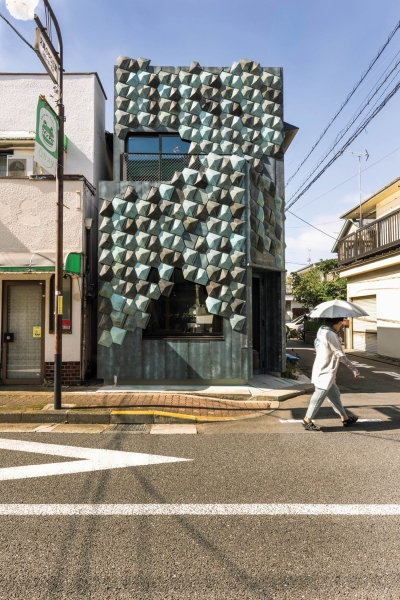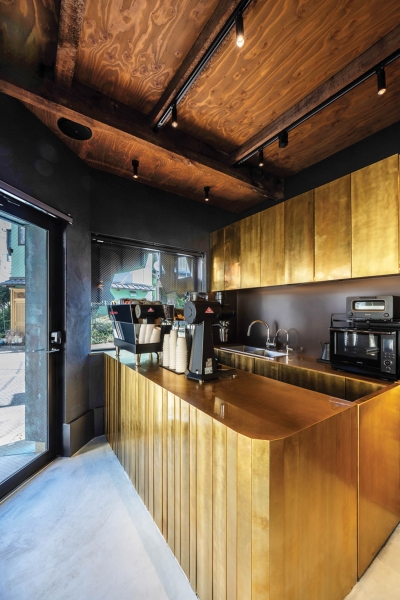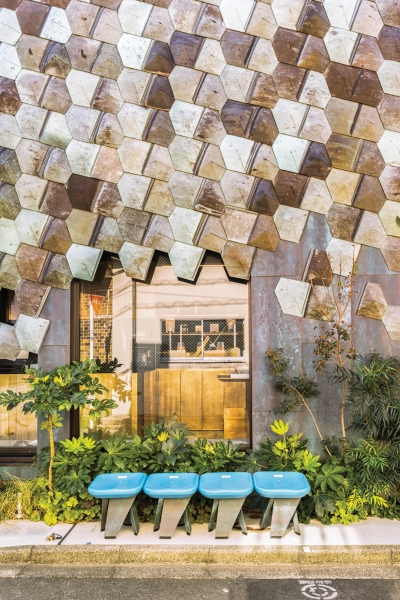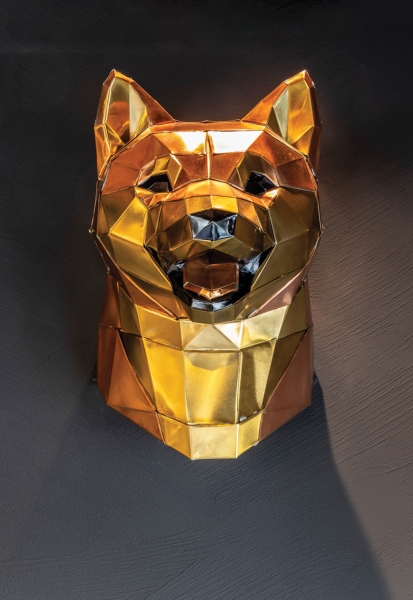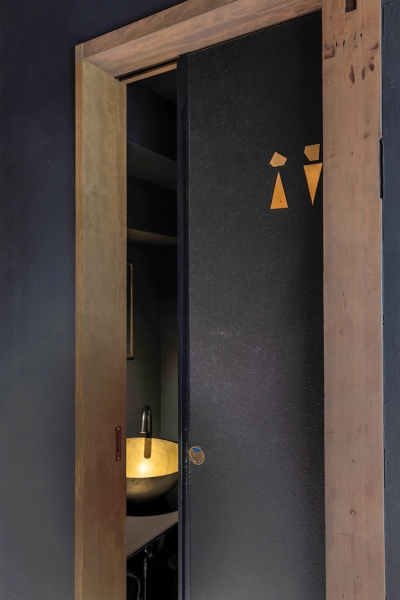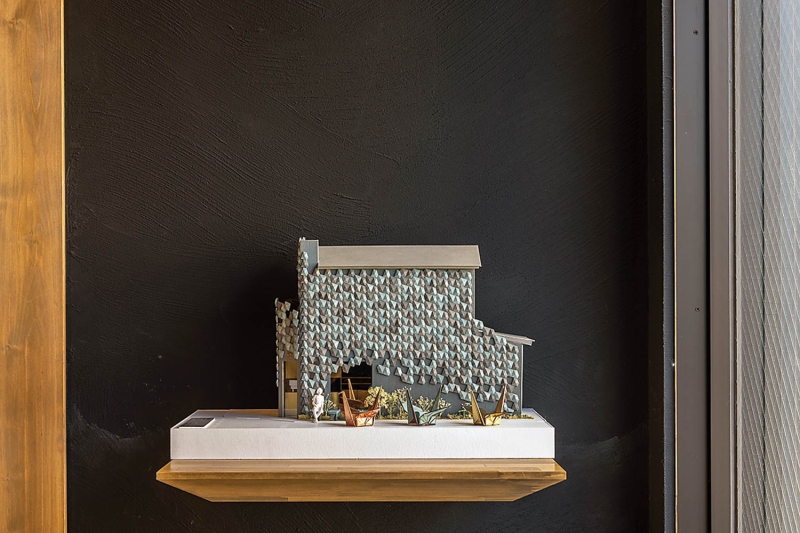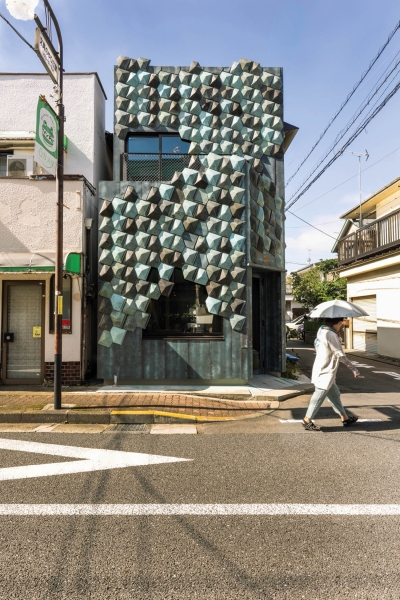The scales of a living fish are not a typical starting point for a design concept. Yet this is an idea that underpins Wakuni Shoten, a café in suburban Tokyo by Japanese architect and Interior Design Hall of Fame member Kengo Kuma that boasts a rhythmic three-dimensional facade of more than 700 verdigris copper plates repurposed from a shrine.
The tidy 600-square-foot spot occupies a former tobacco store in a 55-year-old wooden building on a quiet shopping street in Higashimurayama. The project was helmed by local sheet-metal artisans aiming to revitalize the neighborhood and create an innovative community base. Inside, coffee and Shiba dog-shaped cookies are served amid such crafted brass details as angular counters and shapely pendant fixtures, the warm metal juxtaposing the concrete flooring and black plaster walls.
But it’s the facade that really defines the spirit of Wakuni Shoten. The geometric pentagonal plates—layered, sculptural, origamilike—were formed out of recycled materials from the roof of Hayatani Shrine in Hiroshima, using a technique by metal artisan Tomokazu Uchino. Their patinated surfaces, in an organic spectrum of greens and blues, are in a constant state of transformation, evolving with the shift of time, weather, and light. “Our aim was to breathe new life into the abandoned building,” Kuma says, “into architecture that had been long dead.”
Kengo Kuma Captures Wakuni Shoten’s Spirit Through Sustainable Craft
